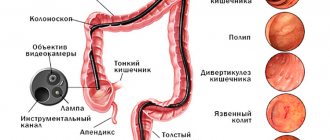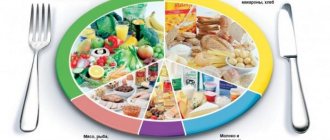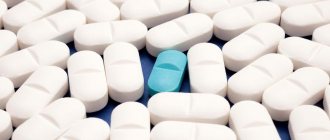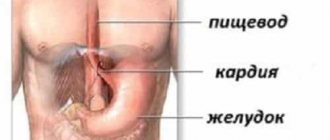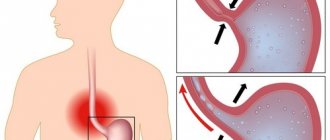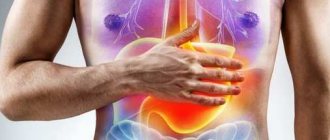Fermentative dyspepsia is a functional digestive disorder and is associated with impaired digestion and absorption of carbohydrates.
Exacerbations are most often observed in spring and summer. Warm climates also favor symptoms of the disease. Gastric secretion decreases, including due to drinking large amounts of liquid in hot weather.
What is fermentative dyspepsia
Fermentative dyspepsia is a syndrome of dysfunction of the gastrointestinal tract, which is characterized by indigestion and disturbances in the processes of digestion and absorption of food. The development of pathology can be provoked by excessive consumption of carbohydrates, poor chewing of food, abuse of products created on the basis of the fermentation process, etc. The disorder is characterized by discomfort in the intestines and mid-abdomen.
What is dyspepsia: causes, symptoms, diagnosis and treatment
What causes dyspepsia (reasons)
The main reasons for the development of dyspepsia are errors in feeding the child. A disrupted diet plays a special role - for example, if the mother feeds the baby more often than necessary, this contributes to regurgitation, and too much food in the baby can cause vomiting.
Children who are formula-fed or formula-fed are more susceptible to digestive disorders than those who are fed breast milk. Selecting formulas over a long period of time, or feeding a low-quality formula will ultimately lead to dyspepsia. In addition, when using formula, overfeeding is possible - after all, it is easier to suck from a bottle than from the mother's breast.
Acute digestive disorders in young children can be caused by the following reasons.
- Binge eating.
- Insufficient enzymatic activity.
- The quantitative and qualitative characteristics of a baby’s food do not correspond to the performance of its digestive tract.
- Introduction of new food that is too early for the child to consume due to his age.
In older children, digestive disorders can also be caused by a number of factors.
- Excessive consumption of foods harmful to the body (fried, fatty, smoked, salty).
- Hormonal imbalance.

Associated diseases are the following.
- Central nervous system disorder.
- Allergic reactions and a history of exudative-catarrhal diathesis.
- Rickets (more about rickets).
- Prematurity.
- Reduced hemoglobin level.
- Hypotrophy.
- Lack of vitamins.
- Parasitic diseases (for example, helminthiasis).
Causes
Regular eating disorders cause dyspeptic disorders. Fermentative dyspepsia develops as a result of the following reasons:
- decreased production of enzymes by the stomach and pancreas, increased production of hydrochloric acid;
- insufficient chewing of food, dry snacks;
- drinking sugary carbonated drinks and cold water;
- poor diet high in carbohydrates and fiber;
- frequent consumption of fast food;
- long-term use of antibiotics, hormones, anti-tuberculosis drugs;
- consumption of fermentation products;
- pancreatitis, gluten intolerance, dysbiosis and lactase enzyme deficiency.
Carefully!
When following certain diets with a predominance of protein foods, putrefactive dyspepsia may develop.
Congenital or acquired enzyme deficiency
In most cases, congenital enzyme deficiency is a genetic pathology that is observed in children. With the acquired form of enzyme deficiency, carbohydrate intolerance is noted in adults. The main causes of lactase deficiency are hereditary factors, food allergies, surgical interventions on the small intestine, and intestinal tumors. The presence of fermentative dyspepsia is a sign of lactase deficiency.
Errors in nutrition
As a rule, dyspepsia occurs as a result of improper and unbalanced nutrition, an excess of any foods, which causes the processes of excess gas formation in the intestines. Fermentative dyspepsia is the excessive consumption of carbohydrates and foods and drinks made by fermentation.

Diet for intestinal dyspepsia
Food for the patient is selected that can normalize the functioning of the gastrointestinal tract. The menu for the patient may be like this:. An upset stomach can be caused by any gastrointestinal disease, poisoning, use of antibiotics and other reasons. It is advisable to immediately consult a doctor and undergo a course of treatment. Proper nutrition will also help the patient cope with the problem. You don’t need to stick to this diet for long, no more than days, since this diet is considered strict and restrictions have been introduced on many products.
If the patient recovers quickly, the doctor may shorten the diet or expand the diet. Following a diet, taking medications, and rest will contribute to the patient’s rapid recovery, especially if the illness was not very serious.
Doctors are paying attention to the increase in intestinal disorders, according to statistics. They have become more frequent both among children and among adults. Finding out the reasons shows how important nutrition is to gut health.
Symptoms
Fermentation processes in the human intestine proceed according to their own biochemical laws and have certain manifestations.
Symptoms of fermentative dyspepsia in adults:
- weakness, dizziness;
- heaviness after eating;
- decreased activity;
- bad breath;
- dry skin;
- decreased appetite;
- nausea, vomiting;
- burning sensation after eating;
In children:
- loss of appetite, even to the point of refusing to eat;
- pain in the central part of the abdomen;
- bloating, flatulence, constipation;
- frequent watery stools;
- sleep disturbance,
- tearfulness;
- decreased activity;
- redness of the skin in the anal area.
Fermentative dyspepsia syndrome includes:
- feeling of early satiety and/or fullness of the stomach;
- "hunger" pains;
- discomfort and/or pain in the epigastric region;
- heartburn;
- bloating, flatulence.
Intestinal manifestations
Any disease has features of its course and manifestations - symptoms that make diagnosis easier; these manifestations are distinguished by their characteristic specificity.
So, intestinal symptoms of fermentative dyspepsia:
- bloating;
- profuse gas evolution;
- increased peristalsis;
- unexpressed pain in the abdominal area;
- liquid, foamy stool that has a sour odor;
- pain after defecation;
- faintly colored stool with a minimum of gas bubbles and an abundance of starch grains.
General symptoms
Problems in the functioning of the gastrointestinal tract occur with poor nutrition. Fermentation dyspepsia occurs as a result of the predominance of carbohydrates in the diet: sweets, flour products, sweet carbonated water, kvass, beer.
General symptoms of the disease:
- Irritability.
- Mild anemia.
- Drowsiness, fatigue.
- Obsession with oneself, “your intestinal problems.”
- Social isolation.
- Problem skin, dry split ends, brittle thin nails.
- Disruptions in the endocrine system.
- Symptoms of intoxication: headache, weakness, lethargy.
Attention!
Exacerbation often develops in the warm season. It is during the spring-summer period that it is necessary to pay special attention to diet and limit the consumption of sweets, since intestinal function depends on this.
What are dyspeptic symptoms? Diagnosis and treatment
But before we start, please like and subscribe to the channel. Thank you!
Before treatment, it is important to understand dyspeptic symptoms, what kind of diseases they are, what the symptoms are and the causes of their appearance.
This includes a group of digestive system disorders, the appearance of which is provoked by a lack of enzymes that allow food to be properly digested.
For this reason, motility failure occurs in the digestive tract, and food that enters the stomach is not processed in a timely manner.
The patient has dyspepsia. This has a negative reaction on the gastrointestinal mucosa, disrupting intestinal motility.
Dyspepsia causes the development of dysbiosis.
Symptoms of dyspepsia
To understand that a patient has dyspepsia, it is important to know what symptoms are characteristic of the disease. Since dyspeptic disorders are a broad group of diseases. The following signs are found:
- heaviness and discomfort in the stomach;
- painful sensations that do not depend on food intake;
- after eating there is a feeling of fullness of the organ;
- a person experiences a state of oversaturation after eating a small amount of food;
- the patient often experiences bloating;
- Possible nausea before and after meals with dyspepsia;
- due to indigestion, constant belching is observed;
- burning or severe heartburn in the chest after eating;
- vomiting may occur;
- stool disturbance is observed.
These are the main manifestations of dyspepsia in adults and children. The doctor, knowing the symptoms, prescribes treatment to relieve negative manifestations.
Types of disorders
In medicine, dyspeptic symptoms have different forms of progression. Therefore, they are classified into types, each of which has its own characteristics, dyspeptic nature of the course and symptoms.
There are two forms of disorders:
- nutritional dyspepsia;
- organic dyspepsia.
Alimentary has the following flow forms:
- fermentative dyspepsia, which appears if a person consumes large amounts of carbohydrates. It can also happen if cabbage, beer, kvass, and beans are constantly consumed;
- fatty dyspepsia, which is provoked by frequent consumption of lamb or pork fat and lard;
- putrefactive dyspepsia, which is characterized by the consumption of large amounts of protein.
Organic dyspepsia has the following subtypes:
- hepatogenic, when liver function is impaired;
- gastrogenic, for stomach upset;
- cholecystogenic, when the amount of bile production decreases;
- pancreatogenic is observed when the pancreas is not functioning properly;
- enterogenous, when intestinal function is disrupted;
- mixed type, when the patient has several pathologies of the digestive system.
Symptoms of organic dyspepsia:
- unpleasant rumbling in the stomach;
- release of gases;
- nausea;
- taste sensations in the oral cavity;
- loose stools;
- food residues in stool;
- increased fatigue;
- decreased performance;
- insomnia;
- headache.
Symptoms of fermentative dyspepsia:
- outgassing;
- belching;
- loose or foamy stools.
Symptoms of fatty dyspepsia:
- 25-30 minutes after eating, pain in the stomach appears;
- an unpleasant feeling of heaviness and discomfort in the stomach;
- flatulence;
- the stool has a greasy sheen.
Symptoms of putrefactive dyspepsia
- dizziness;
- headache;
- general malaise;
- feeling of weakness;
- vomiting or nausea;
- diarrhea. In this case, the stool has a pungent odor and a dark tint.
Diseases with dyspeptic syndrome
There are a number of diseases whose symptoms resemble dyspeptic syndrome. These include the following violations:
- GEOB;
- hiatal hernia;
- chronic gastritis;
- stomach ulcer;
- duodenal ulcer;
- chronic cholecystitis;
- housing and communal services;
- catarrhal reflux;
- benign and malignant formations of the gastrointestinal tract;
- pancreatitis;
- stenosis;
- cancer;
- hepatitis;
- intestinal obstruction.
To distinguish dyspeptic syndrome from other diseases, it is important to undergo a diagnostic examination.
Diagnosis of dyspepsia
To identify a dyspeptic disorder in a patient, it is necessary to conduct a diagnosis. Determining the type of disease will allow you to choose adequate and correct treatment.
- The doctor collects a medical history to identify symptoms and causes of discomfort.
- To establish a diagnosis and find out whether the disease is dyspeptic in nature, the patient undergoes a biochemical and clinical blood test.
- To exclude peptic ulcers of the stomach and duodenum, a stool test is prescribed.
- A coprogram is performed to determine how well food is digested.
- Computed tomography is necessary to exclude malignant tumors.
- To identify the cause of dyspeptic symptoms, the patient undergoes tests to identify lambia and worms.
- The patient is given a gastric juice test.
- Using esophagogastroduodenoscopy, the mucous membrane of the stomach, esophagus, and duodenum is assessed.
- Using impedance pH-metry, acidity is assessed.
- An abdominal ultrasound may be prescribed.
ethnoscience
Traditional medicine recipes help well with dyspeptic symptoms. For those with dyspeptic diseases, the following recipes are suitable:
1. The most effective remedy is raw potato juice.
It helps with heartburn, gas accumulation, and reduces pain. To do this, you need to grate peeled potatoes on a fine grater, squeeze the juice out of the mass and take it a teaspoon on an empty stomach. The course of treatment is 10 days.
After the break, you can repeat the juice intake.
2. Pour boiling water over a spoonful of willow bark and let the broth brew for 30 minutes. Drink liquid three times a day, one tablespoon at a time.
3. Prepare a decoction of gentian and drink a glass of the liquid three times a day.
4. If you have severe heartburn, you can eat a couple of sorrel leaves.
5. Dill or anise oil helps with gas accumulation.
Prevention of dyspepsia
Prevention plays an important role if dyspeptic syndrome is detected.
There are a number of recommendations that must be followed: properly balance the diet;
- Avoid taking citrus fruits, coffee, tea, carbonated drinks for dyspepsia;
- give up spicy, fatty and fried foods;
- quit smoking and alcohol;
- wash your hands before eating;
- Pour boiling water over vegetables and fruits before use;
- do not overeat;
- switch to fractional meals.
Only a healthy lifestyle, compliance with all doctor’s recommendations, and timely intake of medications will help avoid dyspepsia or alleviate negative symptoms.
Source: https://zen.yandex.ru/media/netgastritu/chto-takoe-dispepsicheskie-iavleniia-diagnostika-i-lechenie-5a9cef058139bae2a7e7208b
Diagnostics
To accurately diagnose fermentative dyspepsia, laboratory and instrumental examination methods are used.
Laboratory diagnostic methods:
- coprogram - stool analysis reveals the presence of undigested fibers;
- blood chemistry;
- general blood analysis;
- general urine analysis;
- fecal analysis for the presence of helminth eggs (worms);
- stool analysis for carbohydrates;
- breath test for Helicobacter pylori;
- liver enzymes;
- stress test with disaccharides.
Instrumental diagnostic methods:
- Contrast radiograph of the abdominal organs with barium. It is carried out to exclude organic diseases.
- FGDS - examination of the mucous membranes of the esophagus, stomach, duodenum using an endoscope. If necessary, a biopsy is performed - tissue is taken for examination under a microscope.
- Ultrasound of the abdominal organs to exclude neoplasms, inflammatory processes, and cholelithiasis.
Treatment
The effectiveness of treatment for any functional bowel disorder, including treatment of fermentative dyspepsia, depends on self-discipline and the ability to adhere to the recommendations of the attending physician. At the beginning of treatment, 1-2 fasting days are recommended, during which unsweetened tea and still water are acceptable. Prescribed medications and a strict 4a diet can alleviate the condition and eliminate the symptoms of the disease.
If there are signs of exhaustion and dehydration, a glucose solution is administered intravenously.
Drug treatment:
- Enzyme preparations help facilitate the process of digesting food, for example, Creon, Mezim, Pancreatin. For lacase deficiency - Lactosar.
- Prokinetic drugs stabilize the motor-evacuation function of the intestines and stomach. Representatives of the group: Domperidone, Metoclopramide, Ganaton, etc.
- Bacterial preparations ensure the normalization of the intestinal microbial flora, eliminating dysbacteriosis - Linex, Bifiform.
- Antispasmodic drugs, their use eliminates pain, spasms and discomfort in the intestines: No-Shpa, Drotaverine.
- Carminatives – reduce the manifestations of flatulence, facilitate the passage of gases (simethicone preparations: Espumisan).
- Enterosorbents are a group of drugs that help bind and remove toxins and gases from the intestines (Enterosgel, White Coal).
- Antidiarrheal drugs.
- Drugs that reduce gastric secretion: proton pump inhibitors (Omeprazole, Pantoprazole) and H2-blockers of histamine receptors (Cimetidine, Ranitidine).
- B vitamins.
Medical nutrition

It is impossible to effectively treat gastrointestinal disorders without nutritional correction. Nutrition for fermentative dyspepsia necessarily includes following a strict diet - this is table 4a.
Dietary recommendations:
- It is recommended to include lean varieties of meat, poultry and fish in the daily menu.
- It is necessary to regularly keep a food diary in which to record all meals.
- Stick to your diet and eat small portions.
- Meals should be 5-6 times a day.
- The temperature of the food should be comfortable.
- All food must be chewed thoroughly.
- Give preference to dishes cooked in water or steamed, baked without crust in the oven.
- Include carbohydrates in the menu only with the permission of your doctor.
List of recommended and prohibited products
First of all, products for fermentation dyspepsia must undergo proper heat treatment and not contain carbohydrates and yeast.
Table 1. List of recommended and prohibited foods
| Recommended | Forbidden |
| Unsweetened tea | Butter pastries |
| Meat broth | Sweets |
| Lean meats | Alcohol |
| Semolina | Sweet carbonated drinks |
| Butter | Beer, kvass |
| Cottage cheese | Milk, kefir, fermented baked milk, yogurt |
| Eggs | Jam, honey |
| Lean fish | Corn |
| Cauliflower, broccoli, zucchini, pumpkin | Peas, legumes |
| Fish broth, fish soup | Black bread |
| Compote, jelly | Plums, grapes |
| Porridge on the water | White cabbage, beets, carrots |
| Bananas, baked apples, pears | Mushrooms |
General principles of therapy
Treatment is strictly individual, since the causes of functional types of dyspepsia can differ significantly.
First of all, a strict diet is prescribed, excluding coarse and difficult to digest foods. Meals should be fractional (5-6 times a day).
For the first two days of illness, it is generally recommended to fast and drink only weak (not hot) tea without sugar.
To support the patient’s body, up to 1 liter of glucose (5%) or saline solution per day can be administered.
Subsequently, milk, brown bread and carbonated drinks are excluded.
Most often, gastroenterologists recommend diet No. 4a. After some time, easily digestible carbohydrates begin to be introduced.
The treatment is combined with classic folk recipes - infusion of chamomile flowers, oregano, caraway and dill.
Alcohol and smoking are contraindicated; it is recommended to stop taking anti-inflammatory drugs after consulting a doctor (ibuprofen, diclofenac, indomethacin). In such cases, the only exception may be a minimum dose of acetylsalicylic acid if there is a high risk of blood clot rupture.
All functional dyspepsia are easily provoked by severe stress, so during exacerbations the patient is advised to rest and take sedatives.
An obligatory component of treatment is the restoration of normal intestinal flora. For this purpose, certain probiotics are prescribed (Linex, Rotabiotic, Bifiform, etc.).
Why is fermentative dyspepsia syndrome dangerous?
The lack of competent therapy is fraught with complications. Untreated fermentative dyspepsia can lead to serious health consequences:
- mental disorders;
- organic damage to the digestive system.
Important!
The main cause of dehydration, including shock and metabolic disorders, is the lack of timely treatment.
With constant pain in the intestines, stool disorders, and bloating, adult patients may develop a depressive state.

Features of the disease
Fermentative dyspepsia is a violation of the physiological digestion and assimilation of carbohydrates. The manifestation of signs of the disease is seasonal. Exacerbations are observed in spring and summer, when fresh vegetables and fruits predominate in the diet.
When the disease occurs, the breakdown of carbohydrates into monosaccharides and their absorption from the intestines into the blood are disrupted. In the liver, the process of formation and breakdown of glycogen slows down. Disturbances also occur during the breakdown of glucose.
As a result, carbohydrates are poorly absorbed, their deficiency occurs, and a whole range of symptoms develops. Disruption of metabolic processes, like a chain reaction, leads to a malfunction of internal organs. Carbohydrates are the main source of energy, and the glucose into which they break down is the only food for the brain. Their lack affects the general condition ─ irritability, loss of strength, and headaches appear.
As a result of fermentation, acids are formed in the intestines, which negatively affect the mucous membranes of the digestive tract and cause symptoms of the disease.
Prevention and prognosis
If all recommendations of the attending physician are followed, fermentative dyspepsia can be successfully treated within a month. Prevention in the form of limiting the consumption of carbohydrates and foods containing fermentation products helps restore the functions of the gastrointestinal tract and minimize the risk of relapse of the disease.
A positive prognosis for the disease is possible if you follow medical recommendations, in particular diet, sleep, rest and physical activity. It is recommended to stop drinking alcohol and smoking. The appearance of symptoms of the disease is a good reason to contact your doctor.
Symptoms of pathology

The disease is recognized by its accompanying symptoms, including:
- decreased or absent appetite;
- rumbling in the stomach;
- belching, nausea and vomiting;
- pain localized in the abdomen, headache;
- flatulence, diarrhea;
- decreased performance, increased fatigue, general weakness;
- metallic taste in the mouth, disgusting smell.
- Reduced activity, fatigue, general weakness;
- Metal taste in the mouth and unpleasant odor;
- Headache.
Also, after eating, a feeling of stagnation in the stomach may occur, which indicates a disturbance in the digestive process and the course of the disease.
